BFFA Challenges Government to Honour Preservation Commitments
Tonight, a powerful call to action from Belize’s fishing community. The Belize Flats Fishery Association is turning up the pressure on the government, demanding it honor its promises to protect the country’s fragile marine ecosystems. At the heart of the issue—mangroves, marine life, and the livelihoods that depend on them. News Five’s Britney Gordon has the story.
Britney Gordon, R eporting
eporting
Last month, folks in San Pedro, Ambergris Caye, scored a major win. The government stepped in and hit the brakes on the controversial Cayo Rosario development. That stop order came from the Ministry of Infrastructure Development and Housing—and for many residents, it felt like a long-overdue victory. Now, this fight isn’t new. Since 2018, the community’s been pushing back hard against plans to build over the waters of the Hol Chan Marine Reserve. Cayo Rosario, a tiny island in that protected area, is privately owned—and the developer’s been trying to get this project off the ground for nearly a decade. But thanks to constant public pressure, it’s been delay after delay. Still, the Belize Flats Fishery Association says delays aren’t enough. At a press conference this morning, they raised the alarm again, warning that Belize’s mangroves and marine ecosystems are still under serious threat. Dr. Addiel Perez from the Bonefish Tarpon Trust broke it down, explaining just how much is at stake.
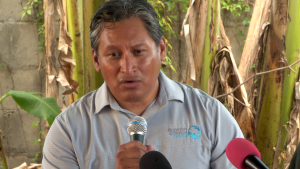
Addiel Perez
Dr. Addiel Perez, Bonefish Tarpon Trust
“Studies in Belize have shown that coral reefs are the most diverse ecosystems when there are mangroves and sea grass nearby. This means that the less mangroves, the less sea grass, the less biodiversity there’s in coral reef ecosystems. So this means, right, that the livelihoods that depend on these ecosystems would be adversely and affected in the long term. And with that, of course, the economies that these ecosystems generate.”
Perez claims that over the past decade, San Pedro Ambergris Caye has lost hundreds of acres of land, directly impacting the habitats of surrounding wildlife and contributing to an unsustainable tourism model. Phillip Leslie of the San Pedro Tour Guide Association explained that development projects receive consistent pushback from stakeholders, not because they are against development, but due to the lack of transparency and consultation regarding them.
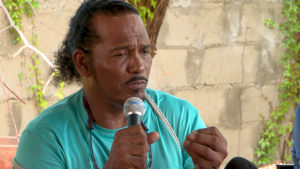
Phillp Leslie
Phillp Leslie, San Pedro Tour Guide Association
“Environment and development can go hand in hand if you know to manage it right. If you know to plan it. Right now, developers come in and they have this idea, I don’t know where they learned it, where they could come in, take everything down, put in buildings, and then plan. When you can work around that and manage it properly. We have always said this, if Cayo Rosario is privately owned and they want to develop, make plans of development for that island, we are upset because the plans are including outside of the island, which is on the protected area, which is on the conservation zone.”
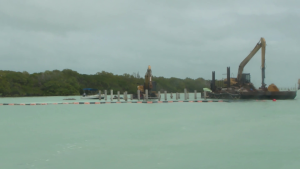 The Belize Flats Fishery Association maintains that this issue cannot be overlooked any longer and demands immediate action from the government. Janelle Chanona, Vice President of Oceana, explains that when decisions are made without consultation, industry stakeholders like fishermen and tour guides are the first to feel the impact.
The Belize Flats Fishery Association maintains that this issue cannot be overlooked any longer and demands immediate action from the government. Janelle Chanona, Vice President of Oceana, explains that when decisions are made without consultation, industry stakeholders like fishermen and tour guides are the first to feel the impact.

Janelle Chanona
Janelle Chanona, Vice President, Oceana Belize
“We are collectively impacted by these decisions, so we should be collectively participating in these decisions. And unfortunately, when it comes to development, particularly at sea, because you know, we say outta sight outta mind, but it’s also happening terrestrially. But we don’t know about things happening until Mr. Billy drive past somewhere Mike di try go fishing somewhere, Mr. Addiell and, and Mr. Norman they fly over di look dong and see something and then you go investigate. And then it seems like there’s this constant anti-development position. But I think what is clear is that what you’re seeing is this resistance to always being the last to know, because we will be the first fi pay.”
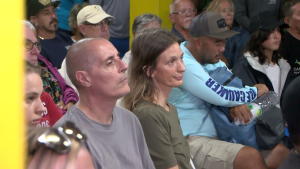 In Belize, the law is clear, any project that could significantly impact the environment must go through an Environmental Impact Assessment, or EIA. It’s a process designed to catch potential harm before it happens. But according to local stakeholders, that process is being sidestepped. Phillip Leslie, of the San Pedro Tour Guide Association, is calling for change. He says it’s time to bring the public back into the conversation. For him and others on the front lines, it’s not just about paperwork, it’s about protecting livelihoods, ecosystems, and the future of responsible development.
In Belize, the law is clear, any project that could significantly impact the environment must go through an Environmental Impact Assessment, or EIA. It’s a process designed to catch potential harm before it happens. But according to local stakeholders, that process is being sidestepped. Phillip Leslie, of the San Pedro Tour Guide Association, is calling for change. He says it’s time to bring the public back into the conversation. For him and others on the front lines, it’s not just about paperwork, it’s about protecting livelihoods, ecosystems, and the future of responsible development.
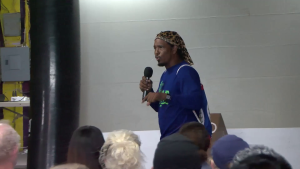 Phillp Leslie
Phillp Leslie
“When we look at development, a lot of it must include an EIA and part of an EIA says that you should go and talk to the public, do a public consultation. Whereas users get an opportunity to show, listen, this development will affect me. How will I be placed in a way that I am not going to lose? But they don’t do that. And then you end up putting a development and outplace users, we, the users are getting tired of being. Kicked down the lane.”
The BFFA concluded with a call to the government to halt dredging and excavation activities that are taking place on Sandfly Caye, which is a prime spot for many fishermen in the area. Britney Gordon for News Five.
The BFFA maintains that it is against development, but encourages responsible investments and transparent, community-based planning.






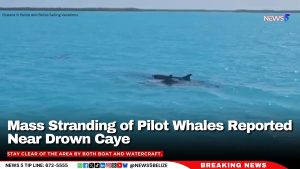
Facebook Comments